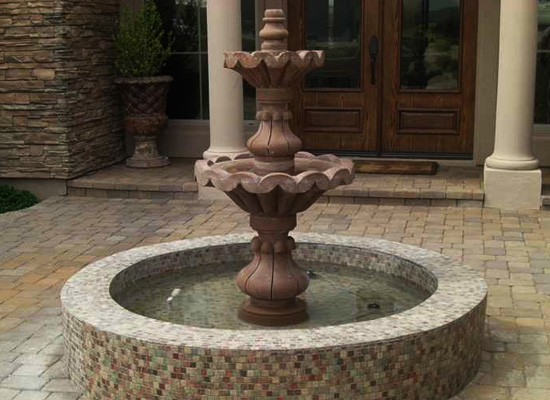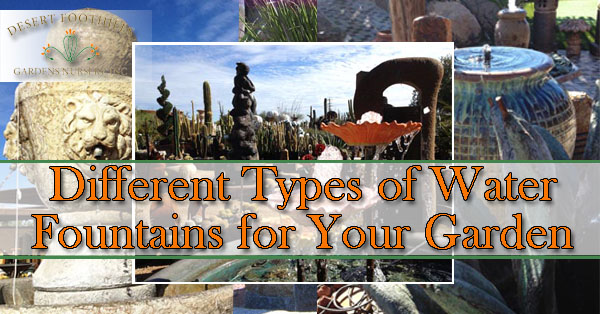Why Cantera Fountains Are a Hit With Upmarket Houses in Phoenix, Arizona
Drive through Phoenix’s most exclusive neighborhoods, from Paradise Valley to Arcadia, and you’ll notice a design element that sets luxury homes apart: cantera stone fountains. These elegant water features, carved from volcanic rock, have become a hallmark of upscale living in the Valley of the Sun. But why are cantera fountains such a hit with high-end properties in Phoenix, Arizona? Let’s take a closer look.
What Is Cantera Stone?
Cantera stone is a natural volcanic rock quarried primarily in Mexico and Central America. The word cantera means “quarry” in Spanish, and this stone has been used for centuries in historic buildings, churches, and haciendas throughout Latin America. Its appeal lies in:
-
A porous, carvable texture that allows intricate design work
-
A wide range of natural hues—soft grays, rose, terracotta, tans, and creams
-
Exceptional durability in hot, dry climates like Arizona’s
-
A unique, handcrafted look, no two pieces are ever alike
According to Stone World Magazine, cantera is valued for its combination of beauty and functionality, making it a perfect fit for luxury landscaping.
Elegance That Elevates a Property
For homeowners in Phoenix’s upmarket neighborhoods, luxury isn’t only about size—it’s about atmosphere. A cantera fountain creates a sense of arrival the moment guests enter the property. The sound of cascading water softens the desert heat and adds serenity to an otherwise arid environment.
Design experts note that water features enhance curb appeal and increase perceived value of a property (National Association of Realtors). For upscale buyers, a hand-carved cantera fountain isn’t just décor, it’s an investment in ambiance.
Built for the Arizona Climate
Phoenix summers are brutal on many building materials. Some plastics and metals fade, warp, or crack under constant UV exposure. Cantera stone, however, is remarkably resilient. It weathers gracefully, resists heat damage, and doesn’t lose its natural color in the sun.
This durability makes cantera an ideal choice for outdoor fountains, which are constantly exposed to the elements. As Arizona Living Magazine points out, homeowners are increasingly turning to natural stone elements that stand the test of time in desert climates.
Custom Beauty and Artistic Versatility
One of cantera’s greatest advantages is its ability to be carved into intricate shapes. Artisans can create fountains with tiered bowls, sculpted animal motifs, floral patterns, or sleek modern lines. Each fountain can be customized to reflect the homeowner’s style and to complement the home’s architecture, whether Spanish Colonial, Southwestern, or contemporary desert modern.
Because no two cantera blocks are identical, every fountain is a one-of-a-kind work of art. This uniqueness resonates with luxury homeowners who want distinctive features that set their property apart.
Cultural Connection and Regional Authenticity
Phoenix’s cultural landscape is deeply tied to Mexican and Southwestern influences. By incorporating cantera stone, which has been a staple of Mexican architecture for centuries, homeowners create a sense of authenticity and heritage. It’s a way of honoring the region’s roots while enjoying a piece of timeless design.
As Houzz notes, natural stone fountains also bring a sense of grounding and history to modern spaces, making them especially meaningful in culturally rich areas like Arizona.
Popular Placement in Phoenix Luxury Homes
Where do homeowners place cantera fountains? The most popular spots include:
-
Front courtyards – A dramatic first impression for visitors.
-
Backyard patios – A focal point for outdoor entertaining.
-
Private gardens – A soothing retreat for reflection.
-
Indoor atriums or foyers – Adding elegance and tranquility inside the home.
These placements not only elevate aesthetics but also create a cooling, relaxing effect—something especially prized in Phoenix’s hot desert climate.
Final Thoughts
In Phoenix’s luxury housing market, details make the difference. Cantera fountains offer timeless elegance, resilience in the desert climate, cultural authenticity, and fully customizable artistry. That’s why they’ve become such a defining feature of upmarket homes across the Valley.
At Desert Foothills Gardens, we’ve seen firsthand how a cantera fountain can transform a property, turning outdoor spaces into serene sanctuaries. For homeowners who want both beauty and substance, cantera remains the ultimate choice.
Phoenix Valley Landscape Consultants
Desert Foothills Gardens Nursery, Inc. offers expert planning and installation of new landscapes for Phoenix valley residents. From Cave Creek to Mesa and anywhere in between we help our friends in Arizona design the most relaxing and beautiful outdoor spaces. Ensure that you consult one of our landscaping professionals for advice with getting the perfect look for your garden. Call Desert Foothills Gardens Nursery, Inc. at 480-488-9455 for more information on our fountains.



